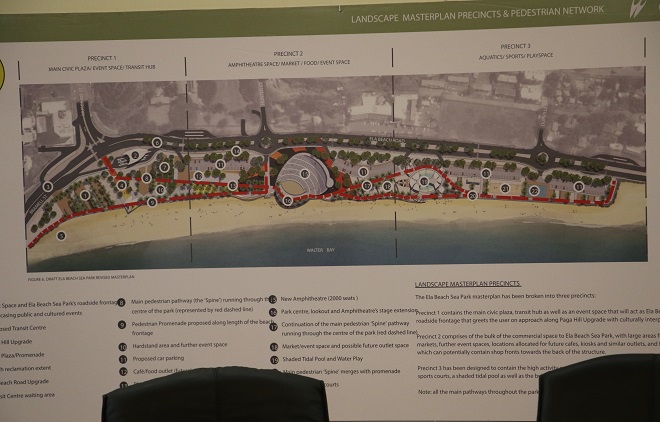
The National Capital District Commission is doing all it can to retain as many trees during the redevelopment of Ela Beach.
However, with expert advice given, some of the palm trees, palms and shrubs have been identified for extraction- 37 to make way for the land works and construction of the Beach park infrastructure.
Twelve of them will also be removed for the construction of the Port Moresby Sewage Project being undertaken through Kumul Consolidated Holdings.
NCD Governor, Powes Parkop says it is best to pull down many of the Casuarina trees which have lived their life expectancy as they have lived through the Australian colonial period.
“We understand public sentiment that the older trees are part of Ela Beach heritage and so we are working hard to save those ones that can still be saved.”
He says the project team had conducted a second lot of assessment that ended with 35 more ending on the To Save List.
“For those that have to be removed these are the ones that really must go. They have been identified to be dead, dying or smack in the middle of the road corridor outside of or not suitable on the Median Strip,”Parkop adds.
He said to leave them till later would only incur more costs to the project now or in the future.
Parkop stressed that many may resident will think we are doing Ela Beach and our residents a disservice by chopping down some trees or digging it up.
“But our interest is to serve our people as best as possible. Ela Beach is the only major park we have in Port Moresby and we are looking forward to making it bigger, better and more serviceable for our residents.”
“Give us some time to finish the project and you will see how good the new Beach will be for you,” said Parkop.
The Ela Beach Redevelopment Project is aimed at improving and redeveloping the Ela Beach to international standards to compliment the nearby redeveloped Paga Hill which accommodates, among many other things, the APEC meeting hall, to be constructed at the Western end of Ela Beach.
